
Growing up on Red Mountain in southeast Washington in the 1990s felt like being in the middle of nowhere. JJ and Tyler Williams recall walking home to their grandparents’ house, which also held the original Kiona Vineyards tasting room in the basement, along a dirt road so rough their school bus wouldn’t drive it.
But the wines were so good, the customers would.
“We put the ‘tasting room’ in the basement of their house because it seemed ludicrous that people would want to come out to Benton City to drink wine,” said Scott Williams, Kiona’s second generation. “Now, we’re not in the middle of nowhere anymore.”
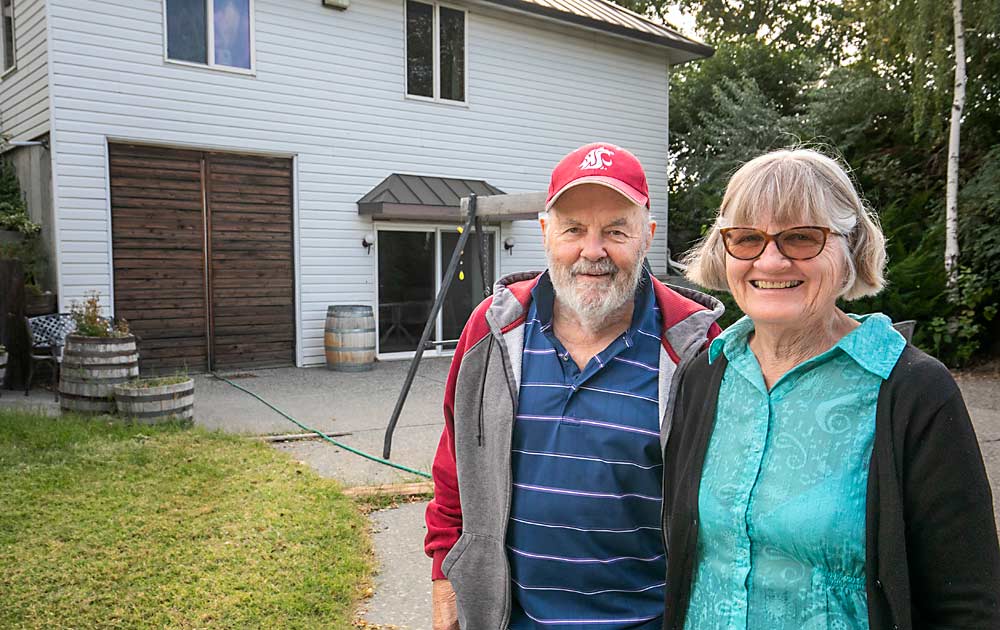
Today, the road is paved and the region is renowned for producing some of Washington’s finest red wines. Over the years, the family business has grown along with the Red Mountain AVA they co-founded, which now hosts some 50-odd vineyards covering 2,300 acres of former sagebrush slopes just west of Richland.
That sense of place remains integral to how the three generations of the Williams family tell their story. It’s a story of luck, hard work, friendship and how a family business evolves across three generations when it accidentally pioneers a premium wine region.
A tasting room replaced the basement in 2007, overlooking their first blocks.
“People still have to come here on purpose,” said JJ Williams, now the general manager of the business his grandparents started with their first grape planting in 1975. “We lean into that. The idea we want to drive home is that these grapes and this wine come from a place, and that place is right here.”
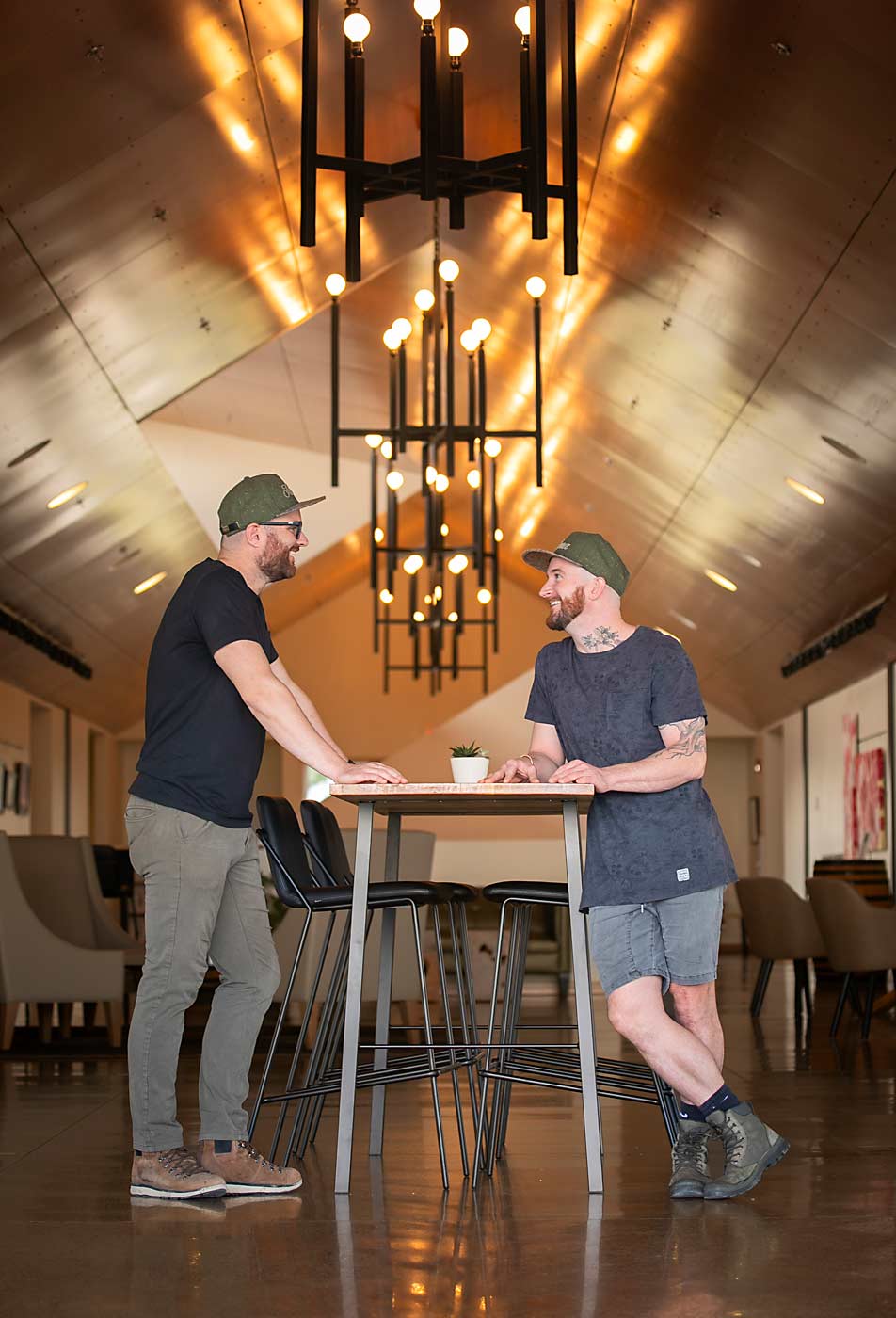
A deep well and a family’s deep roots
It’s well-known Washington wine lore that a couple of engineers at the Hanford nuclear site, John Williams and Jim Holmes, became Red Mountain’s founding fathers after they bought dry land from John’s father-in-law and did enough amateur geology research to believe they could afford to drill a well deep enough to hit groundwater.
The idea of growing Cabernet Sauvingon in Washington was “outlandish” at the time, but the first crop garnered rave reviews from a winemaking friend, John said. So, they started planting more red grapes and making wine in Holmes’ garage in Richland, which they then trucked back to Red Mountain to bottle by hand in the Williams’ basement. It’s lucky they were engineers, able to rig an old flatbed truck to carry a tank back and forth and design their own equipment.
“Engineering is just solving problems, and we had problems: a place in the middle of nowhere, no water, no electricity and no equipment,” Jim recalled.
But soon, the state’s fledgling wine industry started paying attention, and more neighbors started planting. And planting.
“There was no vision we had at that time that it would be anything like what happened,” said Jim. (In the 1990s, the Williams family bought out Jim, and he bought a neighboring vineyard, Ciel du Cheval, which his son now runs. The families remain close friends.)
There were times, in those early years, that they thought about giving up. But they always made the choice to keep going.
“Everything we did was a little bit before its time,” said Scott, who helped plant the first blocks as a teen and became the only full-time employee in the early ’80s. “It’s an accomplishment when you consider how hard everybody worked. The tenacity really sticks out.”
Scott took the operation to the next level, Jim said. Over the years, he grew Kiona Vineyards from that original 9 acres into five estates across Red Mountain today — and made wines that began to attract interest from the wine press and the wider world.
Reflecting back, from the days when people thought they were crazy to the current business he never could have imagined, John said the real success is that his family has been happy working together.
“It reflects a lot that I’m happy, my wife is happy, my son is happy, and the kids are happy,” he said. “Someday maybe my great-grandkids …”
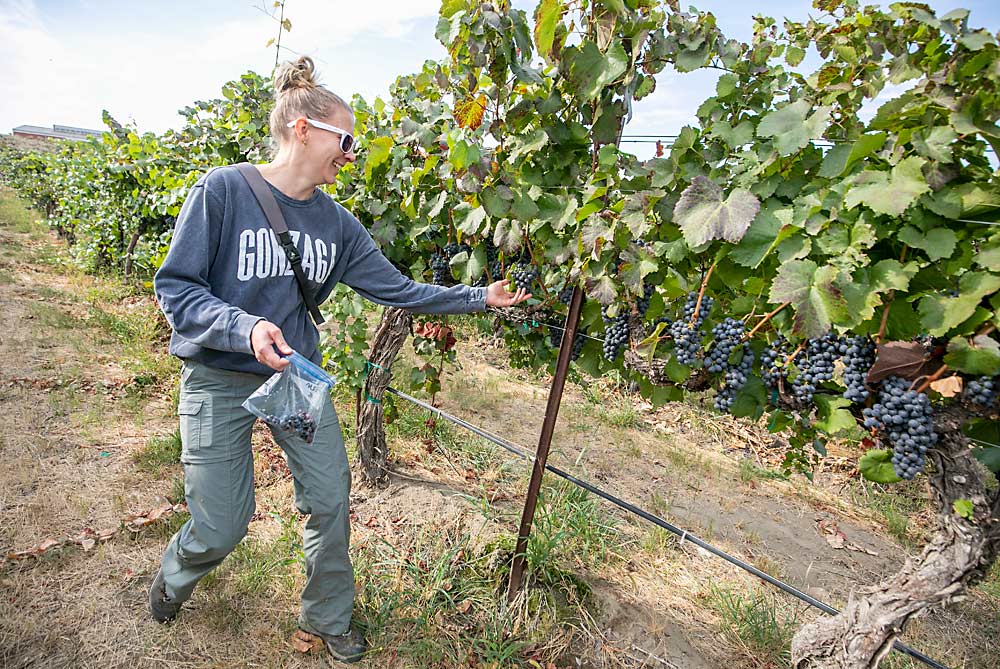
From middle of nowhere to epicenter
The third generation — general manager JJ and winemaker Tyler — run a vastly different-looking business today. While Scott learned how to make wine to showcase Red Mountain’s fruit to an unfamiliar market, today the AVA has a world-class reputation. The wine club counts members in almost 50 states, visitors come from around the world, and, oh yes, they arrive on paved roads.
The pioneer era is over; there’s little plantable land left in the AVA.
“So, we’re looking at a supply constraint as the Red Mountain clout grows,” JJ said. He likes how that looks for the future of Kiona Vineyards, “as long as we keep doing our jobs.”
But those jobs have changed. For years, Scott ran the winery and the vineyards. Now, JJ runs the business, with help from accountant Jesse Mejia, whose father is a longtime vineyard foreman (making the Williams family not the only multigeneration family at Kiona). Tyler took on the winemaking side in 2019.
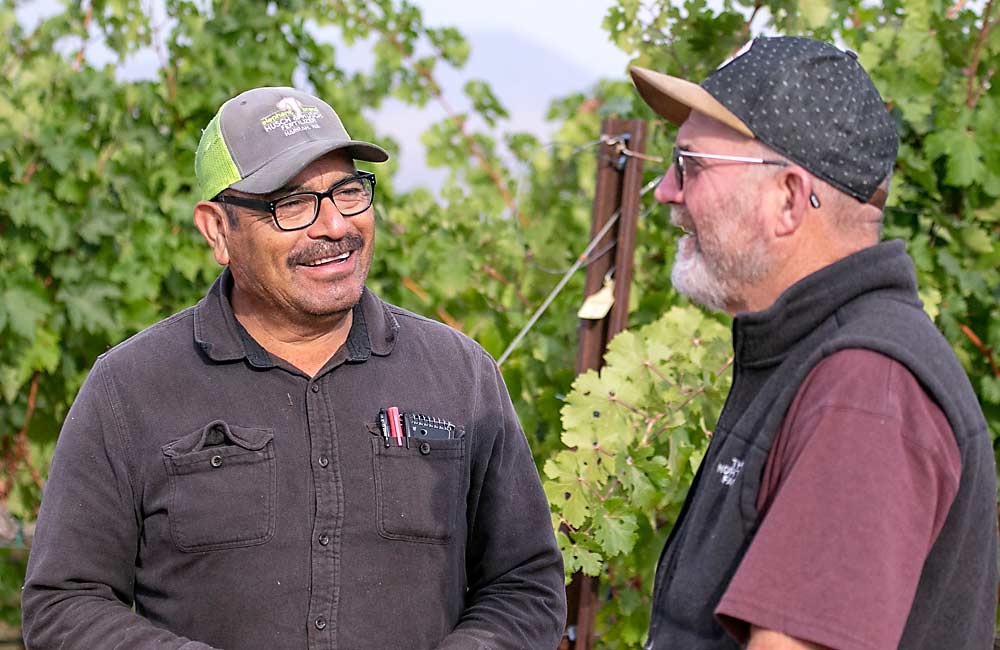
Yes, Scott made Kiona what it is today, Jim said, but “now he’s getting out of the way. He’s got two kids who are top professionals in the wine business, and they are now moving forward to the next level. It’s going to be exciting to watch.”
Scott credits workshops run by Northwest Farm Credit Services with helping the family navigate generational transitions for their growing business, but he was also inspired by his own unusual experience. John and Jim kept their day jobs as engineers at Hanford, to afford their gamble on grape growing, so Scott charted his own path.
“They needed someone to run the business that they didn’t have to pay very much,” Scott said with a laugh. Years later, he wanted to make the same space for his sons to join the family business on their own terms, as “a son doesn’t always want to follow in his father’s footsteps,” he said.
For their part, JJ and Tyler said they always wanted to find a way to contribute to the family business. “There was an expectation that you couldn’t just mosey back in because of the last name,” JJ said.
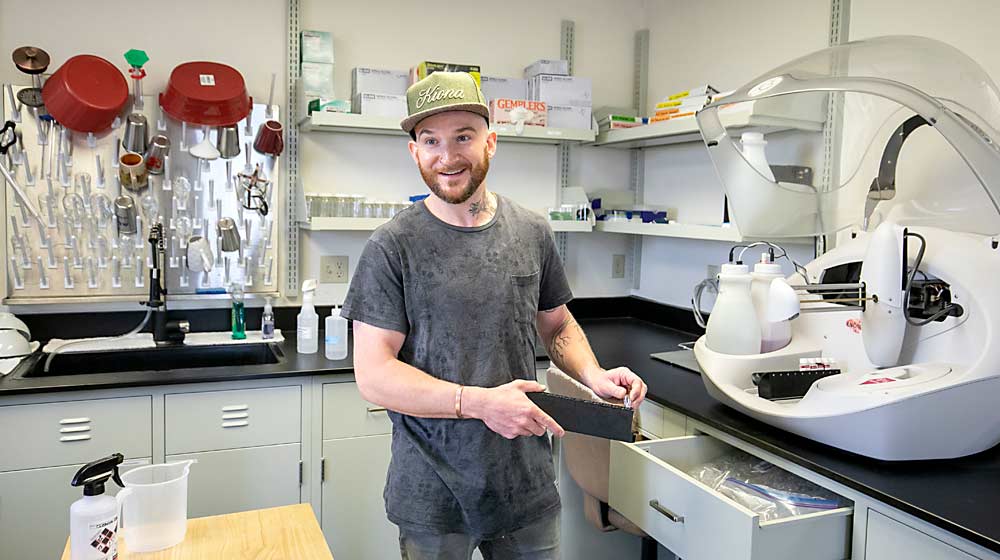
For him, that meant business school. For Tyler, it meant four years of traveling the world and taking winemaking gigs, “the foundation of my winemaking education,” he said, followed by earning his master’s degree in wine science at Washington State University.
“My dad has 40 years of winemaking experience, but my track offered me an opportunity to digest what we are doing here and put my own spin on it,” Tyler said.
“That was the hope — that you wouldn’t want to keep doing the same thing,” his dad said. “I’m very proud of these two.”
Which is not to say that Scott’s retiring just yet.
“There’s enough to do out here that I’m not looking over their shoulders,” he said of his sons and the almost 300 acres producing grapes for the family’s own winery as well as 60 others across the Northwest.
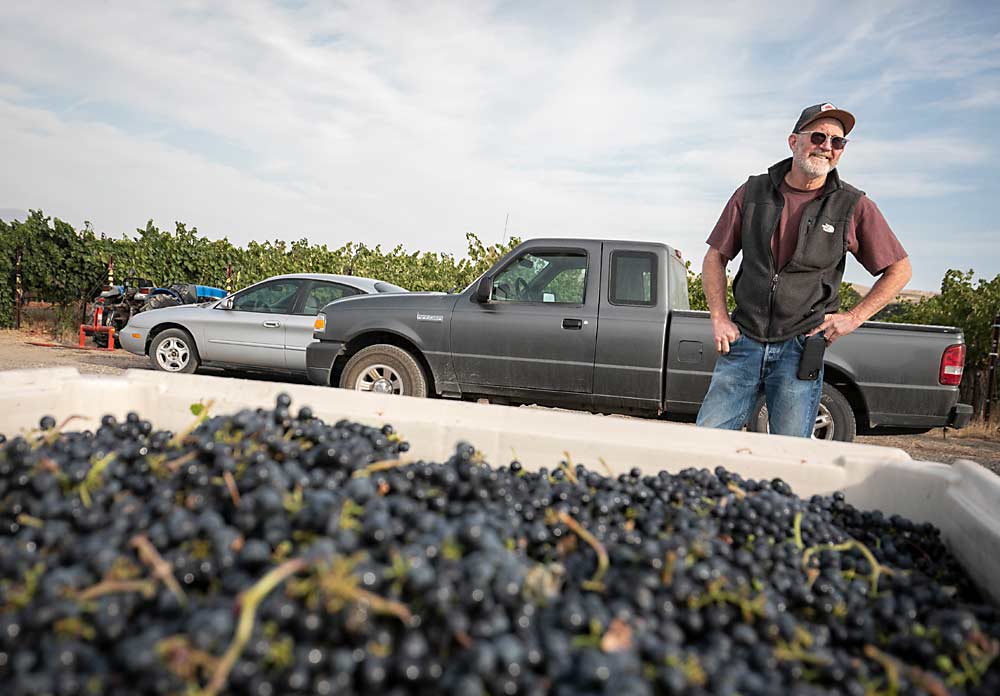
That makes for a busy harvest, juggling harvest timing decisions in an unusually delayed season for the customers that they “share” about half the crop with. “We grow it all for ourselves, but we grow more than we need, so we share,” Scott said of his farming philosophy.
That suits Kiona’s new winemaker just fine. “We get the last picks, but I like ripe, fruity wines and I’ve adapted my winemaking styles to that,” Tyler said.
Being an estate winery gives them an advantage on the grape sales side too, JJ added.
“Tyler can take our grape customers downstairs to taste,” he said. “It’s much more collaborative than just waving goodbye to the trucks at harvest.”
One of those winemakers, Louis Skinner of Betz Family Winery, credits the collaboration with the Williamses for the success of his single vineyard Cabernet made from Kiona’s “Heart of the Hill” vineyard, conceived by his mentor, Bob Betz.
“We were able as a group to build this new wine,” Skinner said. “They work really hard to help us improve. It’s kind of a shared vision, which is not that easy to find.”
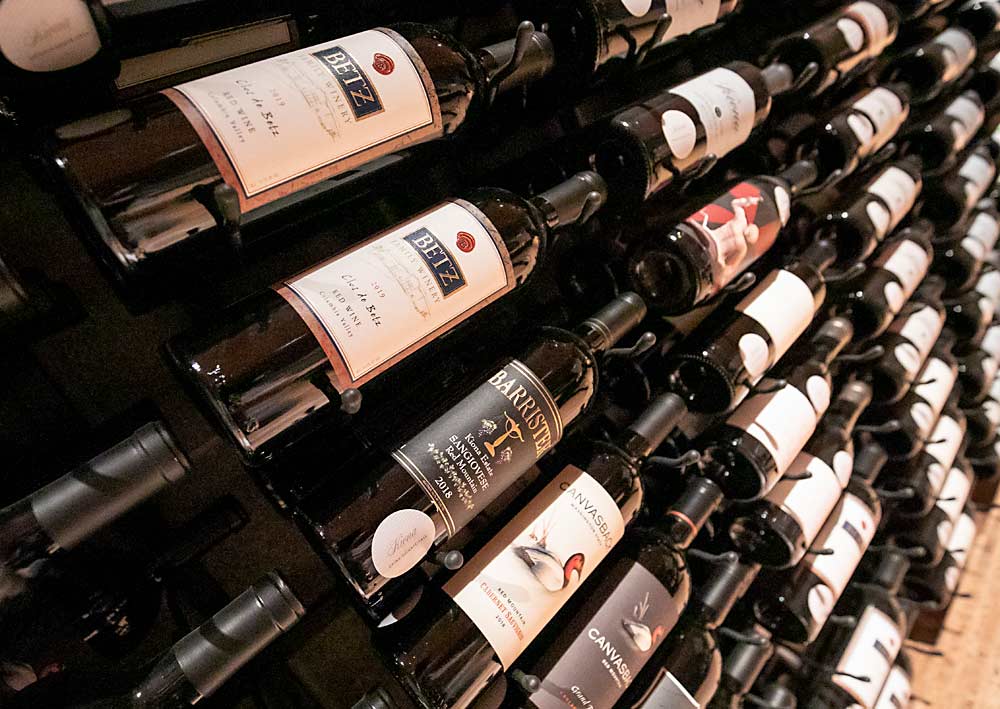
Having worked with the Williamses for almost 10 years, he’s also impressed with how the family plans for the future.
“They just know Red Mountain really well, and they are constantly looking at what other parts of the hill could add to their portfolio,” he said. “When you look at what the Williams family does with grape growing, they are looking really long-term. They have this generational view of where they want to be in the future.”
Scott agreed.
“We’d like to be around for 100 years. With the right stewardship, I know we can,” he said. “It’s exciting.”
—by Kate Prengaman






Leave A Comment